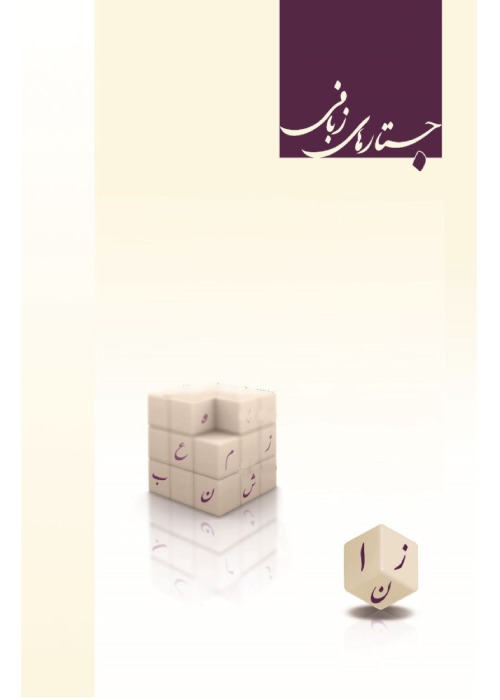Possible Application of Alexeeva's Metaphorical Model in Terminology
Author(s):
Article Type:
Research/Original Article (دارای رتبه معتبر)
Abstract:
Human being perceives phenomena by perceiving another series of phenomena, especially by using metaphors which enormously facilitate the comprehension of abstract concepts. While metaphors play an important role in generating science, language and even remodeling our way of thinking, there is hardly specific model for metaphors that can be used in scientific branches and particularly in terminologization. Building a model would not only be useful for word formation but also appears fruitful for terminologization in artificial intelligence and machine translation. The question which may be raised here is whether to know if it is possible to design a model which compiles both conceptual and lexical categories so that it represents a combination of platonic & Aristotelian perspectives and definitions longly addressed for metaphor. To answer the above mentioned questions; we have adopted Alexeevas metaphorical model which is in continuance with platonic perspectives on the subject and is in alignment with cognitive approaches. The hypothesis may be formulated as if Alexeevas model would be sufficient enough in creating new metaphors. Once we have briefly evoked the recent investigations about metaphor and have quickly revised its functional classifications, we analyze its pertinent illustrations in Persian corpus language and present our new model on the basis of cognitive sciences. We would finally see the possibility of terminologization in our new proposed model. The results of this investigation show that Alexeevas metaphorical model is not fully-fledged enough to be addressed in terminologization. However by altering and moderating some features of this model, we may redesign the sand hour glass model so that the concepts which are shaped in the 1st sphere is mapped via assimilation in the 2nd sphere, according to which a single term , may find two different extensions in their respective spheres. Although the term used in 2nd sphere is conceptually speaking similar to the 1st sphere, but the extensions of term in these two spheres are considerably different. As the extension of the term utilized in the 1st sphere is extended, the 2nd sphere has used the metaphor in a different sphere or context. Consequently, our proposed model is not merely projected in language, but the terms created inside it are nourished mutually by conceptual lexical realm. Therefore, in contrary to what it is stated by Alexeeva, metaphors are not exclusively lexically labelled, but they are also conceptually marked. We are finally convinced that according to the context that metaphors are utilized in, we could expect different extensions and appreciations of the terms.
Language:
Persian
Published:
Language Related Research, Volume:8 Issue: 6, 2018
Pages:
55 to 74
magiran.com/p1782426
دانلود و مطالعه متن این مقاله با یکی از روشهای زیر امکان پذیر است:
اشتراک شخصی
با عضویت و پرداخت آنلاین حق اشتراک یکساله به مبلغ 1,390,000ريال میتوانید 70 عنوان مطلب دانلود کنید!
اشتراک سازمانی
به کتابخانه دانشگاه یا محل کار خود پیشنهاد کنید تا اشتراک سازمانی این پایگاه را برای دسترسی نامحدود همه کاربران به متن مطالب تهیه نمایند!
توجه!
- حق عضویت دریافتی صرف حمایت از نشریات عضو و نگهداری، تکمیل و توسعه مگیران میشود.
- پرداخت حق اشتراک و دانلود مقالات اجازه بازنشر آن در سایر رسانههای چاپی و دیجیتال را به کاربر نمیدهد.
In order to view content subscription is required
Personal subscription
Subscribe magiran.com for 70 € euros via PayPal and download 70 articles during a year.
Organization subscription
Please contact us to subscribe your university or library for unlimited access!


